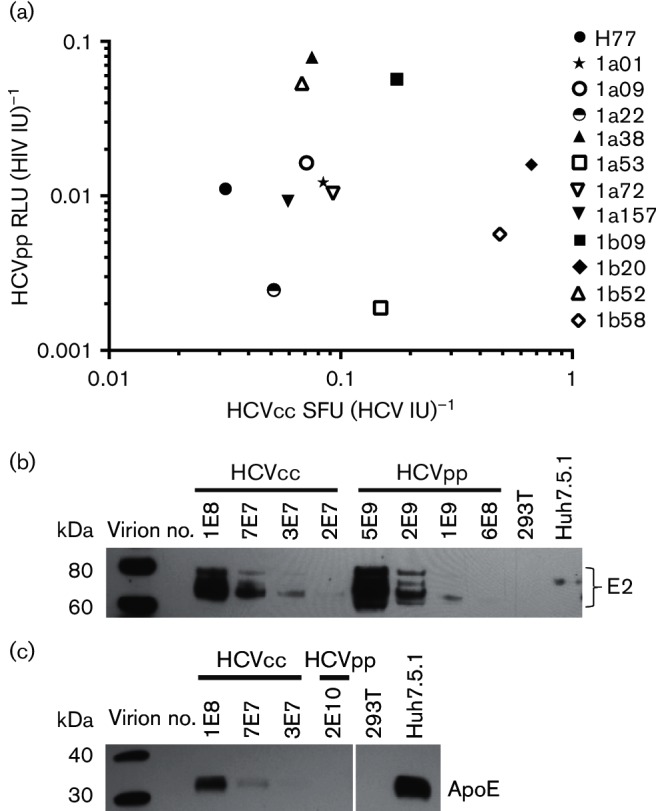Fig. 3.

No correlation between relative specific infectivities of E1E2-matched HCVcc and HCVpp. (a) Serial dilutions of 12 different E1E2-matched HCVcc and HCVpp were used to infect Huh7.5.1 cells. Using a data point in the linear range of each infectivity assay, entry was quantified for HCVpp (RLU per millilitre of supernatant) and HCVcc (SFU per millilitre of supernatant). Viral RNA was extracted from these supernatants and RNA viral load (IU per millilitre) quantitated using real-time PCR and an IU viral load standard. Specific infectivity for HCVpp was calculated as RLU per HIV IU and for HCVcc as SFU per HCV IU. Each point represents specific infectivity of HCVcc on the x-axis and HCVpp on the y-axis of E1E2-matched HCVpp and HCVcc. Values represent the average of two independent experiments performed in duplicate or triplicate. (b) E1E2-matched HCVcc and HCVpp (1a38 variant) were purified by ultracentrifugation through a 20 % sucrose cushion. Viral RNA was extracted from the purified supernatants and viral copy number (IU) measured. A dilution series of the purified virus was analysed by Western blotting. Mock-transfected 293T supernatants (293T) and uninfected Huh7.5.1 cell supernatants (Huh7.5.1) were also tested. Blots were probed with human anti-E2 (HC33.1.53). (c) Purified E1E2-matched HCVcc and HCVpp (1a38 variant), mock-transfected 293T supernatants (293T) and uninfected Huh7.5.1 supernatants (Huh7.5.1) were analysed by Western blotting probed with anti-ApoE.
